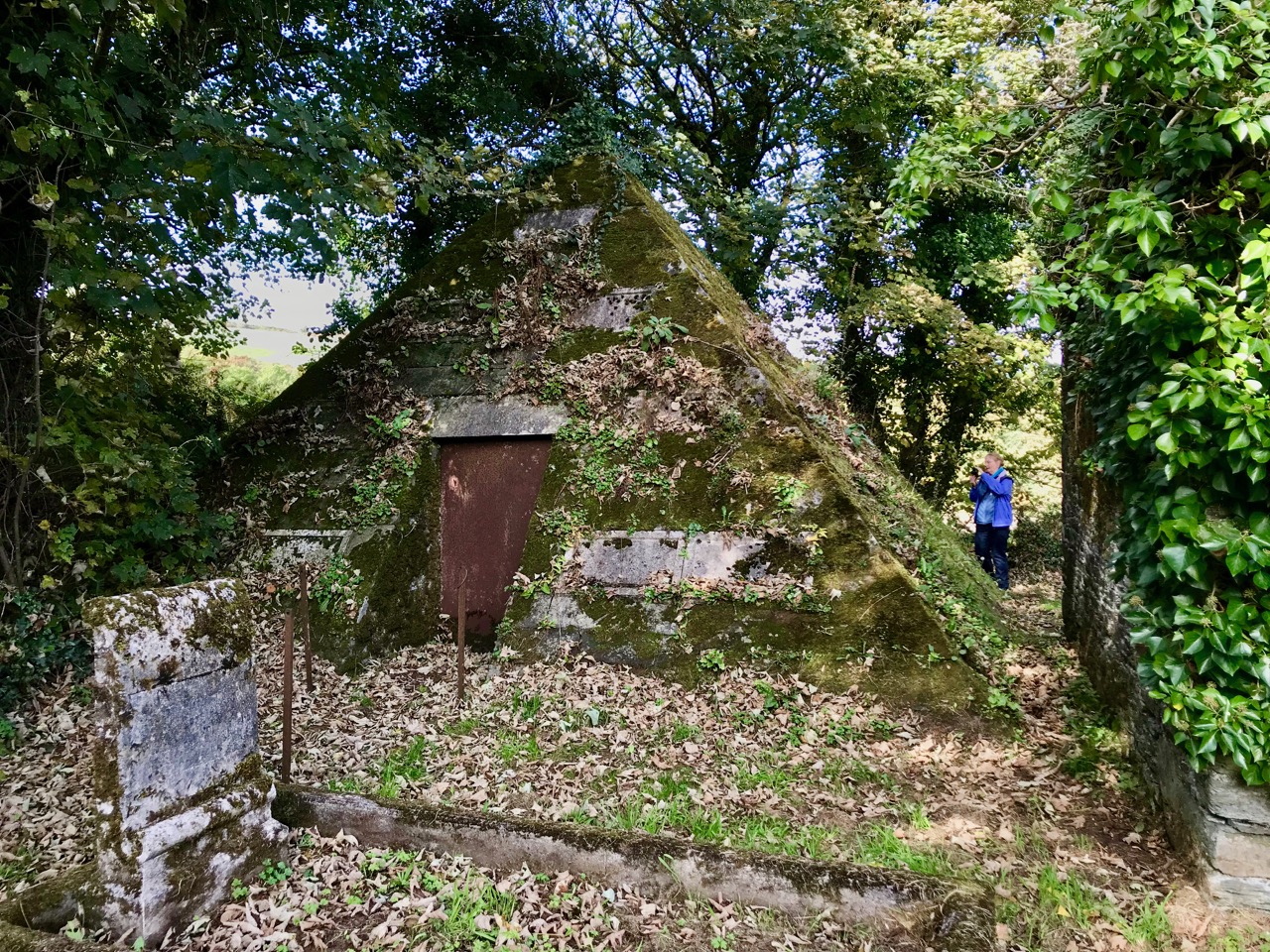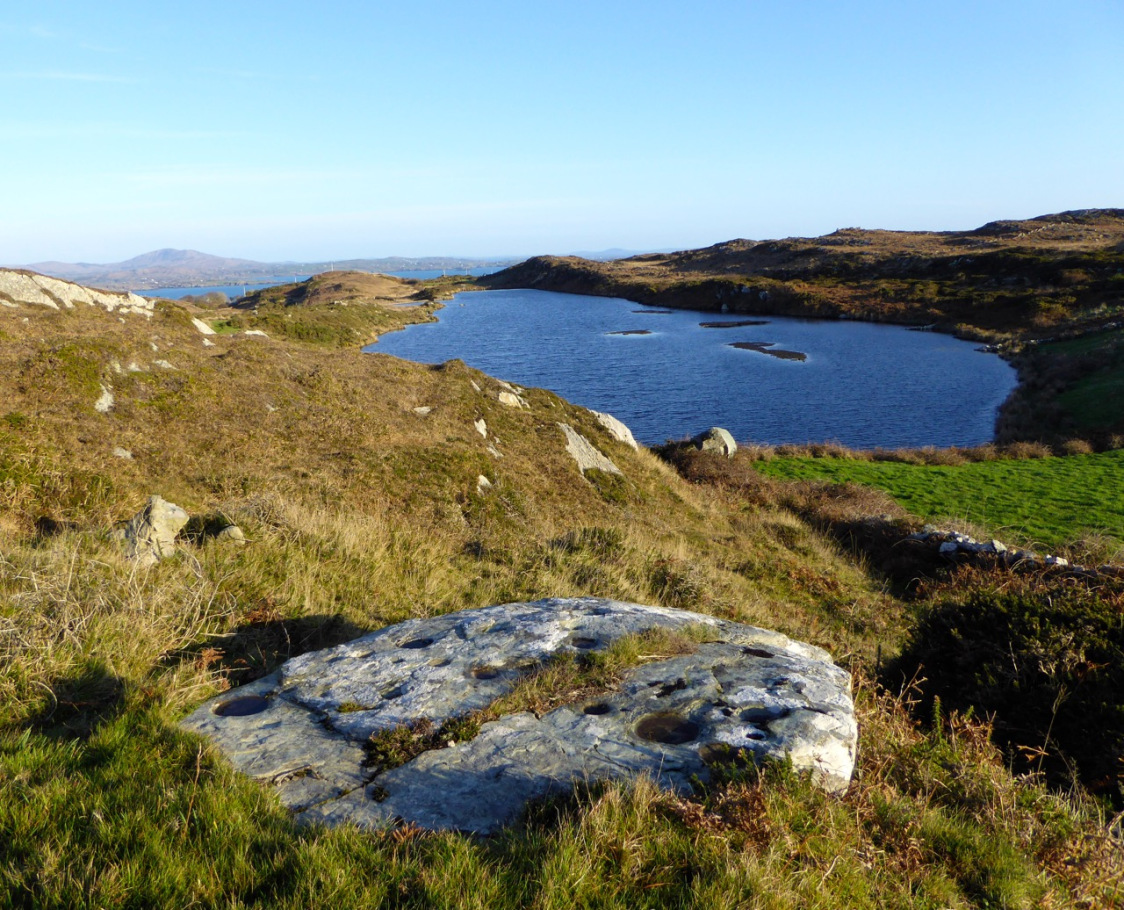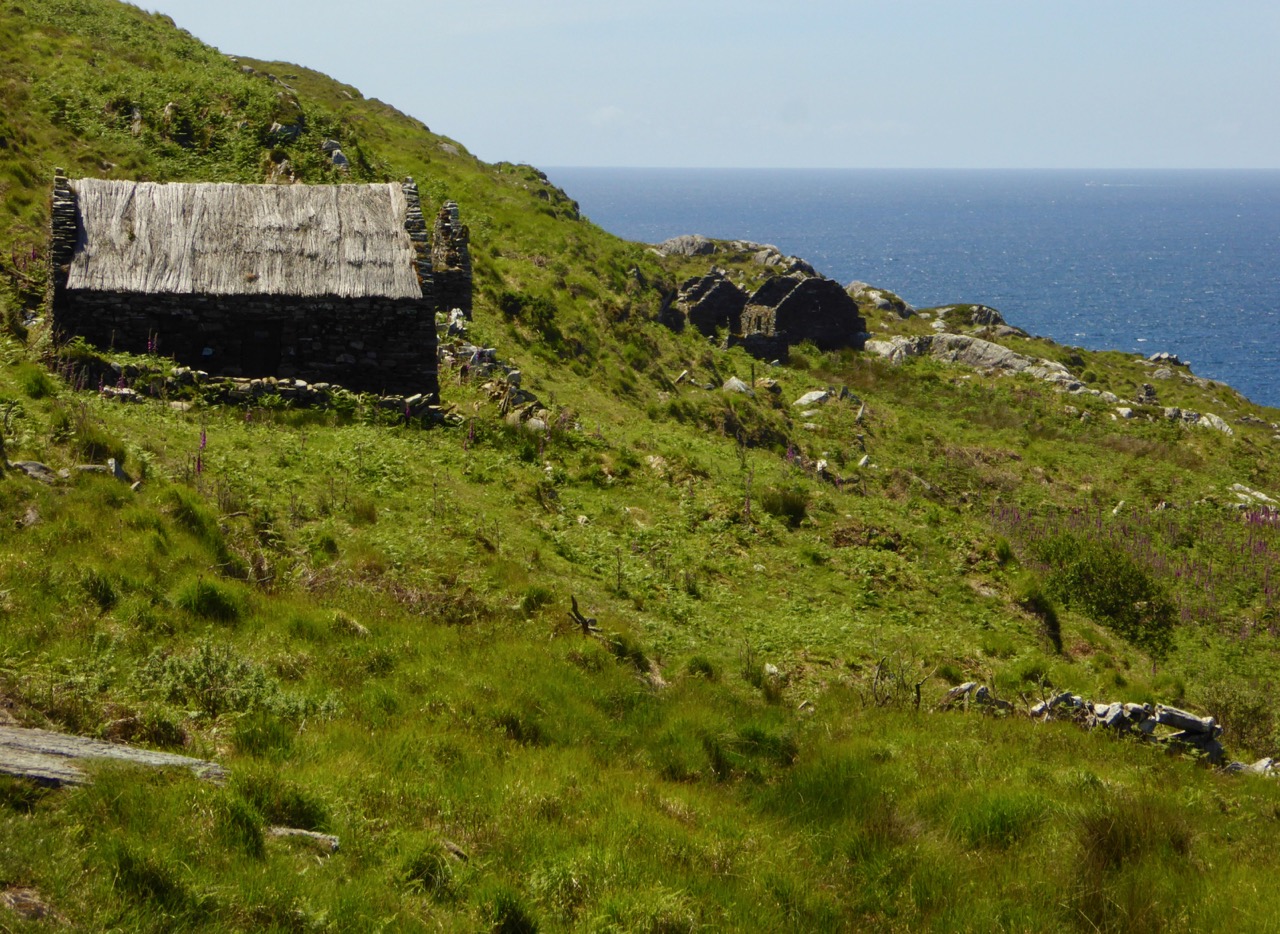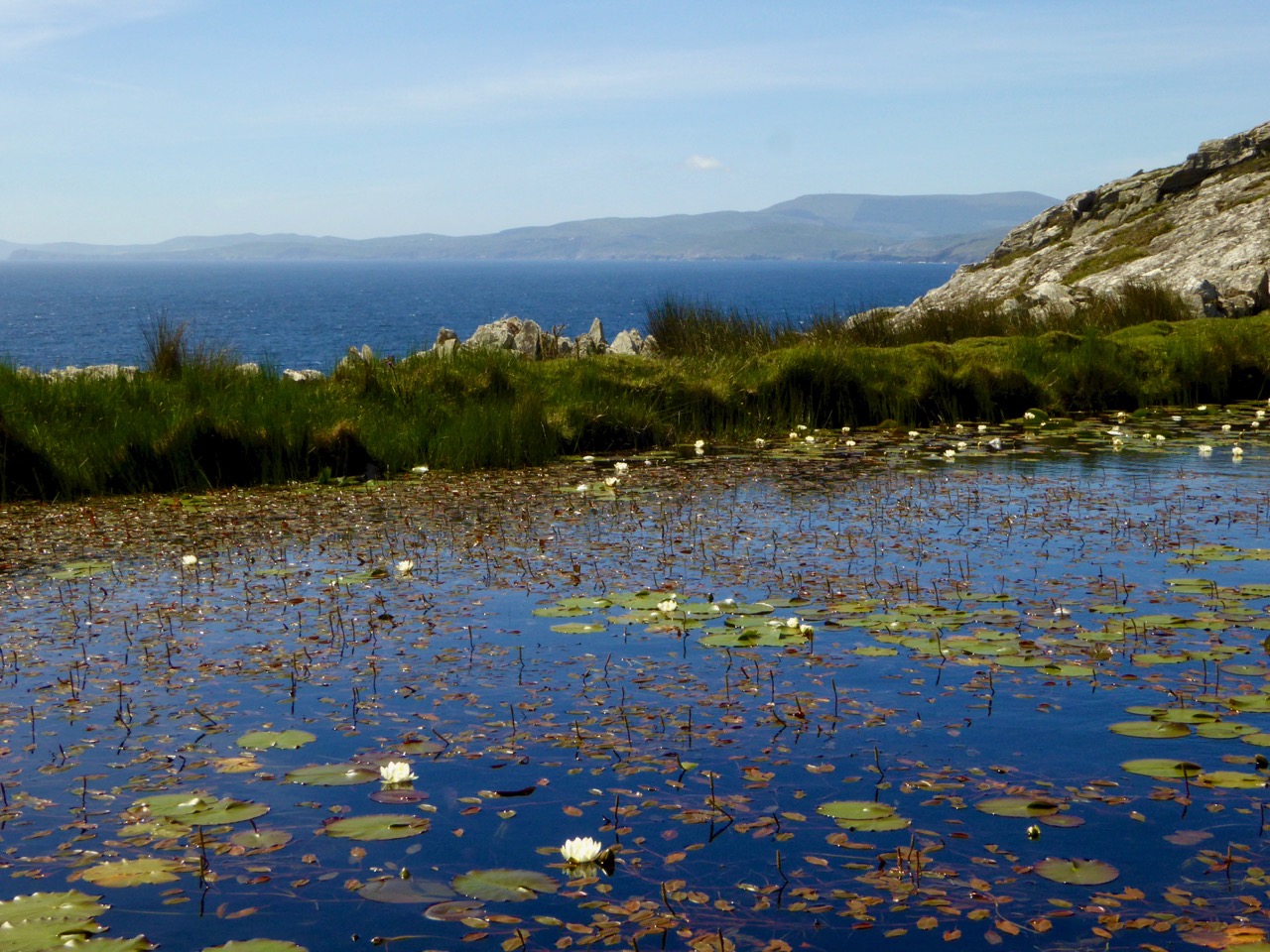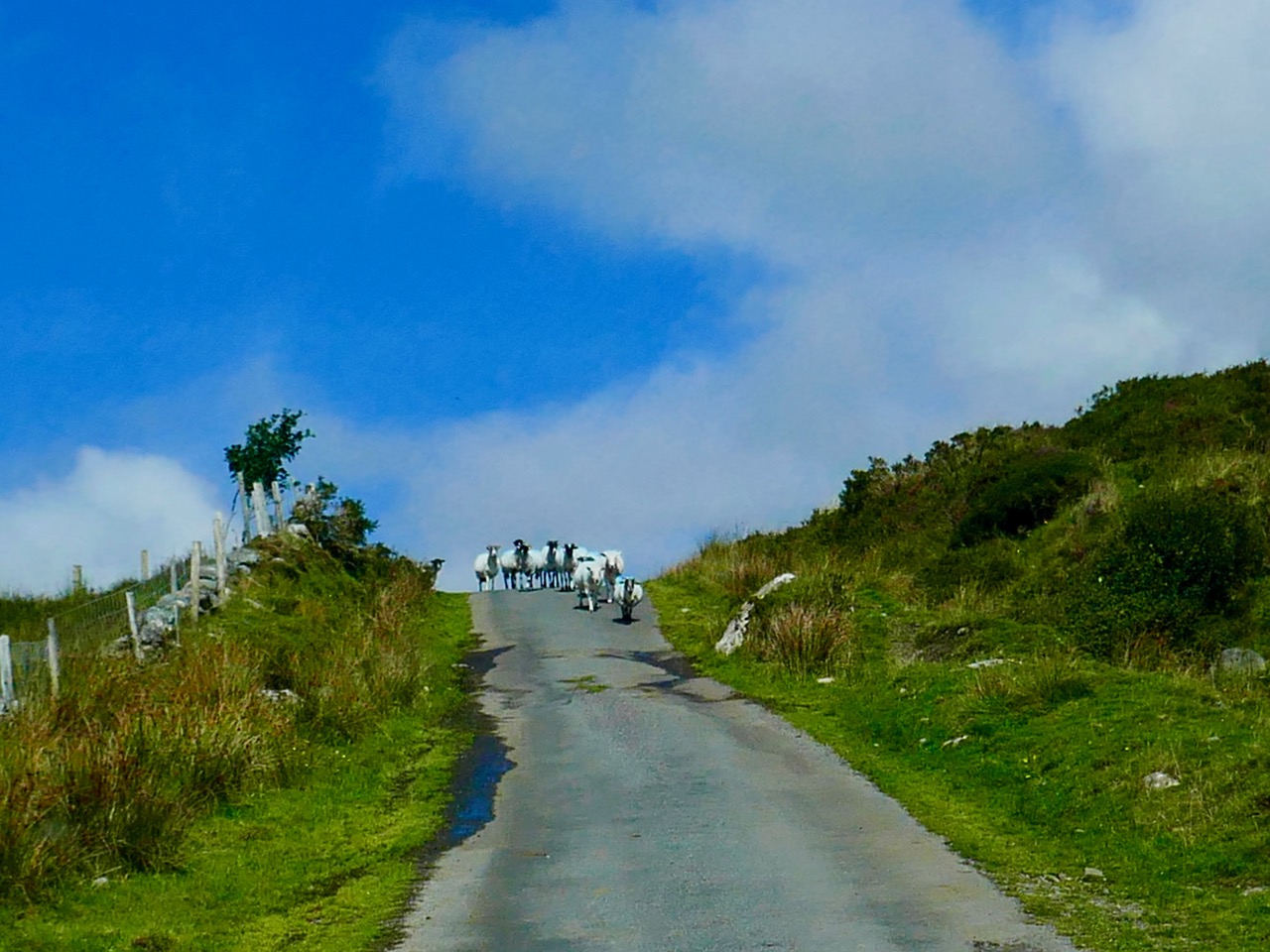
The Tailor and Ansty is a classic book by Eric Cross (below) – beautifully written, hilarious, and capturing the couple in all their humorous (Tailor), crotchety (Ansty) and big-hearted glory. The story didn’t have a happy ending (see Robert’s post) and Ireland will forever be ashamed of that episode in our priest-ridden history, but this post will concentrate on happier times.

People flocked to visit the Tailor and no matter who you were – neighbour, stranger or famous person – you were sure of a welcome, a cup of tea, and a taste of the Tailor’s way with stories and earthy humour. Among those who came were prominent artists of the day, including Nano Reid and Seamus Murphy. Nano, it is thought, would cycle all the way from Ardnagashel, where she was staying with her lifelong friend Patricia Hutchins (yes – the same family as our beloved Ellen Hutchins). This is her painting, only recently identified as depicting the Tailor – my sincere appreciation to David Britton for the image and all the information. David runs one of those pages that convince you that Facebook still has the power to be a force for good in the world.

As David pointed out to me, if there are any doubt as to who this is, Eric Cross’s description of the Tailor in his usual place by the fire should clinch it (look closely).
At one side of the fire is an upturned butter-box. This is the Tailor’s fireside seat. It is placed so that its opening is between his legs, and here he sits, never upon a chair.
Like everything else in the house it has a name. The Tailor refers to it always as ‘Cornucopia’ and explains that a long time ago a Greek king gave such a box to a ‘jolly cupper’, who gave him a drink when he was thirsty, telling her that whenever she was in the want of anything she had but to look inside and she would find it there. . . .
Whatever Amalthea’s horn held, the Tailor’s ‘Cornucopia’ almost rivals it for contents. Beneath the axe with the insecure ahead, with which he chops wood upon the hearthstone, and the goose-wing with which he sweeps up the ashes, there is a collection of bits of cloth, cords, tins, bits of tools and such like things, out of which he can always find a makeshift for almost anything. . .
Behind ‘Cornucopia’, against the wall, is the settle. In the corner of this, directly behind the Tailor, is the office. This is his accumulation of correspondence over the years. There are letters, photos, postcards from all over the world, stacked up into a pile. Here, too, is his box of cuttings from papers. There are paragraphs cut from newspapers relating to people he knows mixed up with accounts of freak calves and suchlike wonders. Between the arms of the settle and the wall or his pipes. Each pipe, each letter and each photo recalls a friend.

Seamus Murphy was counted as a special friend and came often to visit. At this time (1936) Seamus was making a name for himself as one of Ireland’s foremost sculptors. Here he is in 1934, courtesy of his family who maintain the site https://seamusmurphysculptor.com/wp/

Seamus proposed to do a bust (or busht, as Ansty called it) of the Tailor’s head and the Tailor was immediately agreeable. Chapter fourteen of The Tailor and Ansty relates what fun he had with this project.
‘Dammit, man, it was ever said that two heads are better than one, and the one I have now I have had for 75 years and it is getting the worse for wear. Of course I’ll have a new one’.
All the apparatus and materials were assembled, and the Tailor inspected them with the interest of a fellow craftsman. Ansty ignored the business in the beginning. Her only interest in it was her resentment of the invasion of the Room – ‘with all the old clay and mortar to make a new devil’ – and making fresh disorder of her disorder.
The Room at last justified the Tailor’s name for it, and did become for a while ‘The Studio.’ For an hour or so each day he posed and talked and commented. The measurements interested him and he linked this part of the business with his own craft.
‘Many’s the time that I have measured a man’s body for a new suit of clothes, but I never thought that the day would come when I would be measured myself for a new head.’
‘I think that we will have a rest for a while,’ suggested Seamus during one session.
‘The devil a rest do I need. Do you know that I feel it less than I did the time the whole of my body was making before I was born. There is a considerable improvement in this method. A man can smoke and take it easy and chat away for himself.’

The Tailor is visited by his friend the Sheep, a man given to worry, who wonders if it is an unlucky thing for a man to have his image made and asks how it is to be done. The Tailor explains the process:
‘Yerra, manalive. It’s easy enough. You stick your head into a pot of stirabout, and when it is cold you pull out your head and melt the metal and pour it into the hold your head made. Then you eat up the stirabout and you find your new head inside the pot.’
The exchange with his friend, Dan Bedam, captures all the wit and divilment of the Tailor. Having assured Dan Bedam that there’s a new method of making people because the young people are failing at the job, and the population of the country is going down he responds to Dan’s wonderment.
‘Dam, I was thinking, Tailor, will you be able to use it? Will you be able to talk and smoke and see with it?’
‘Thon amon dieul! What the hell do you think that I am having it made for? Do you think that I want to become a dummy? I tell you that when I have this head I will be a different man. You have often heard tell that you cannot put a young head on old shoulders. Well, this is what it is. I was thinking of having it done the other way at first. Of having a new body fitted to my old head, but the expense for the bronze was too much, so I am starting with the head first. Then I thought that the new brains would not be so good as the old ones. Then I thought that the old ones had done a power of thinking in their time and it would be better after all to make a start with the head.’
Dan was lost in wonderment for awhile.
‘Bedam, but Seamus Murphy must be a clever man.’
‘Clever! I should think he is. He is as good as Daniel O’Connell and Owen Roe put together. They were good enough in the old-fashioned way, but before he’s finished he’ll have the whole of Ireland populated again. It’s a much quicker way than the way you had of going about the business, Dan.’

Eric Cross gives an account of the unveiling, with the whole valley there to see it and The Saint (Fr Traynor) giving a speech. The image, of the busht, above, is from the marvellous Catalogue of Seamus’s work published by the Crawford Gallery.
It was a great night. The drink flowed and the tongues were loosened. The Tailor sang and everyone sang and soon the busht was forgotten. But the Tailor keeps in touch with it still. He has cuttings from the papers relating to it, and he follows it round from exhibition to exhibition in the newspapers.
Nor has Ansty forgotten. Now and again she contemplates the Tailor for a moment or two and wonders, and then expresses her thoughts, ‘and to think that Seamus made a busht of that old devil as though he was a saint in a church. The man must be half cracked. As cracked as himself. Glory be! and to think that he wouldn’t settle the leak in the chimney for me, and he with the good mortar and plaster, making a busht’.

Seamus was a friend to the end – he made the marvellous tombstone that can be seen in the graveyard at Gougane Barra. On it he carved the words A Star Danced and Under That Was I Born.

By the way, if you want to see how one of the casts looks in situ, here is a marvellous post by Don Ross, a Guide at Farmleigh House in the Phoenix Park. Thank you Don – you were one of the inspirations for this post, along with a recent conversations with Seamus’s daughter Orla and her husband, Ted.


